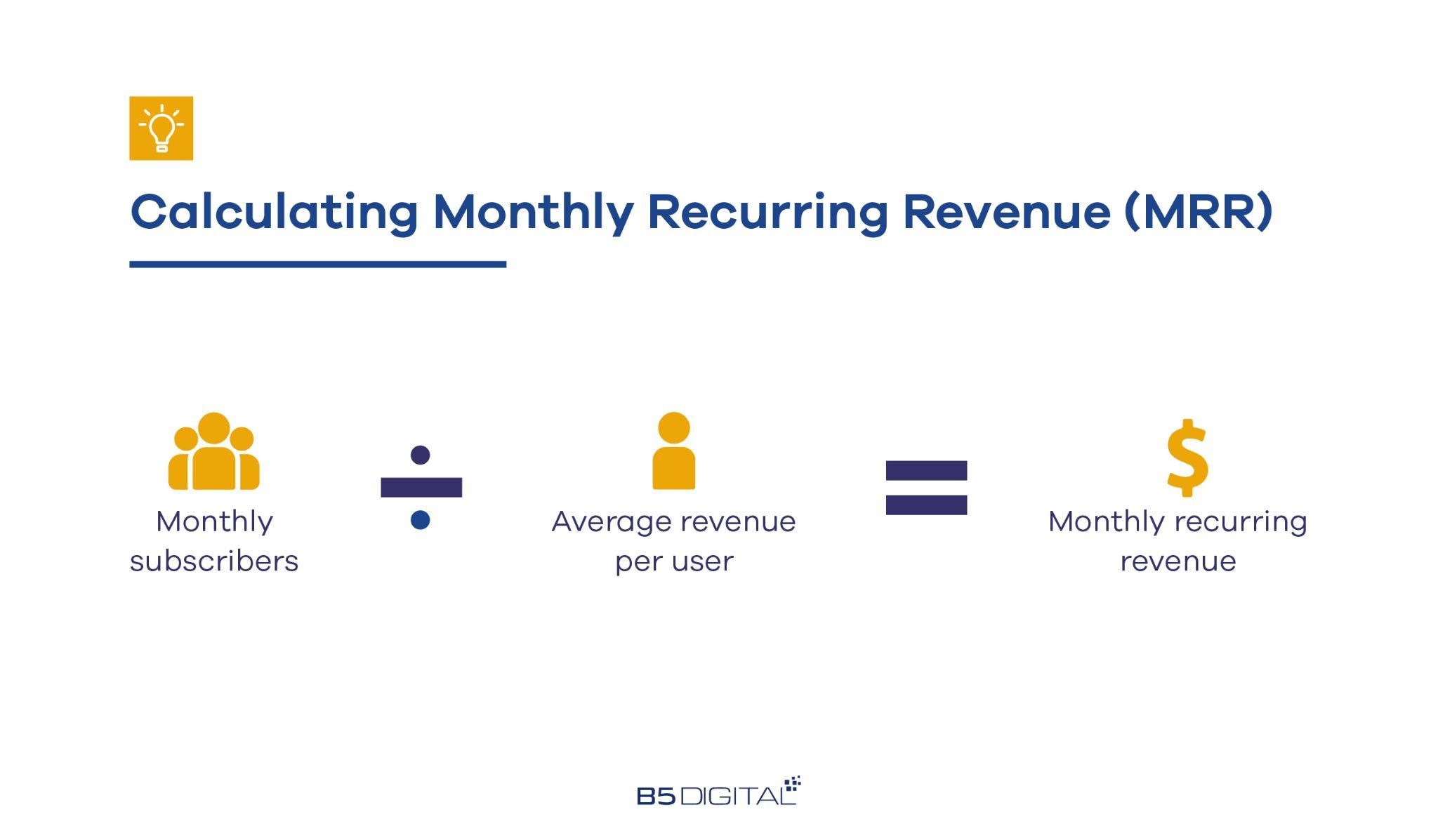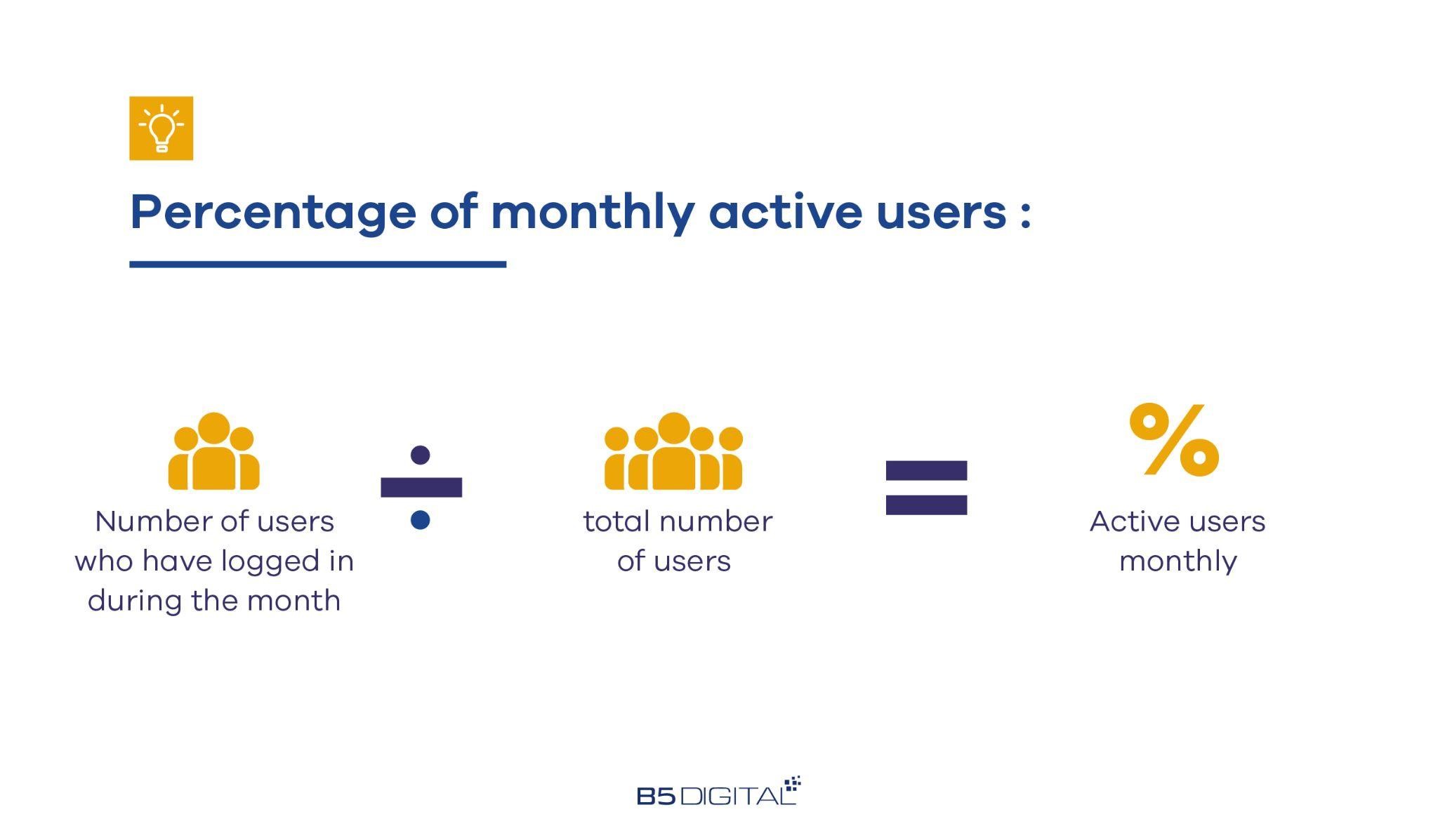SaaS platforms provide a flexible and fast way for businesses to make money from their software, considering they rely on subscriptions and sub-services with relatively cheap prices compared to selling an entire software.

However, this comes with challenges in managing the SaaS product, as you need to sustain subscribers and retain customers to be able to grow.
Businesses can only achieve this if they properly monitor metrics and KPIs that can help them understand their status and make the right decisions.
In this blog, we are focusing on the metrics every SaaS business should monitor to grow and succeed.
Monthly Recurring Revenue (MRR)
SaaS companies rely on subscriptions as a major source of revenue. But do they all know how much exactly do subscriptions account to every month? This is what the monthly recurring revenue metric solves.

This simple, yet extremely useful metric can help you manage cash flow in a better way, and avoid overestimating your monthly revenue over the upcoming period.
It can also bring additional types of MRR including:
New MRR: which is the new recurring revenue you have started making at a certain month.
Expansion MRR: which is the additional revenue you have made in a certain period from upgrades, upselling and cross-selling recurring users.
Contraction MRR: which is the revenue you have lost due to cancellations and downgrades from recurring customers.
Customer Acquisition Cost (CAC)
Customer acquisition cost is a metric that shows how much you have spent to acquire a customer on average. It is calculated by dividing the total marketing costs by the number of users who have signed up for a paid version of your product.
This metric is great to consider for every SaaS out there because it is a measurement of the efficiency of your overall marketing efforts. Whether they are going up or down over time.
In some cases, it can let you know whether your marketing activities are feasible or if you need to use different channels.
Customer Lifetime Value (CLV)
Customer lifetime value allows you to know the average revenue your business gains throughout the entire time a user is paying for your service.
This metric, when compared to the customer acquisition cost. It can let you know whether what you are making from customers. Or specific ones is more or less than what you paid for acquiring them through advertising and marketing.
Comparing this metric over time also allows you to know whether you are able to retain customers, upsell and cross-sell them properly or not.
Daily Active Users (DAU) and Monthly Active Users (MAU)
The number of users active on your platform daily and monthly is a great metric to know whether people are really being provided value from their subscription or not. Then help you track the delivered value over time.
Higher numbers definitely mean less expected churn, and when you see the numbers going down. You can expect churn to increase and need to re-engage users to use the platform more frequently. Then retain their subscription of the service.

Activation Rate
Customer activation is when a new user sees the value of the product and decides to go deep with the service and invest in it. This is the same moment a user decides to take real advantage of the service.
Activation can only be measured by mapping customer journeys and using behavioral analytics. To determine which new users have been activated over a period of time after completing a specific action. The activation rate is then calculated as a percentage of users who have completed a specific action.

Churn Rate
Churn is the rate at which users unsubscribe from your service. Most healthy SaaS platforms have a churn of 5-6%, and up to 10%. And while you can’t combat churn or cut it to 0%. You need to continuously monitor this metric and to reduce it to the lowest possible level.
By monitoring churn over time, you can determine your next steps to avoid the loss of more customers. Also how to engage existing ones and make them benefit more from your service.
During SaaS development, you can consider making all of these metrics trackable. So that you don’t have to integrate them later.
At B5 Digital, we always recommend doing so and making adding such features as cost-effective and rich as it can become. Feel free to ask us about any additional details.



